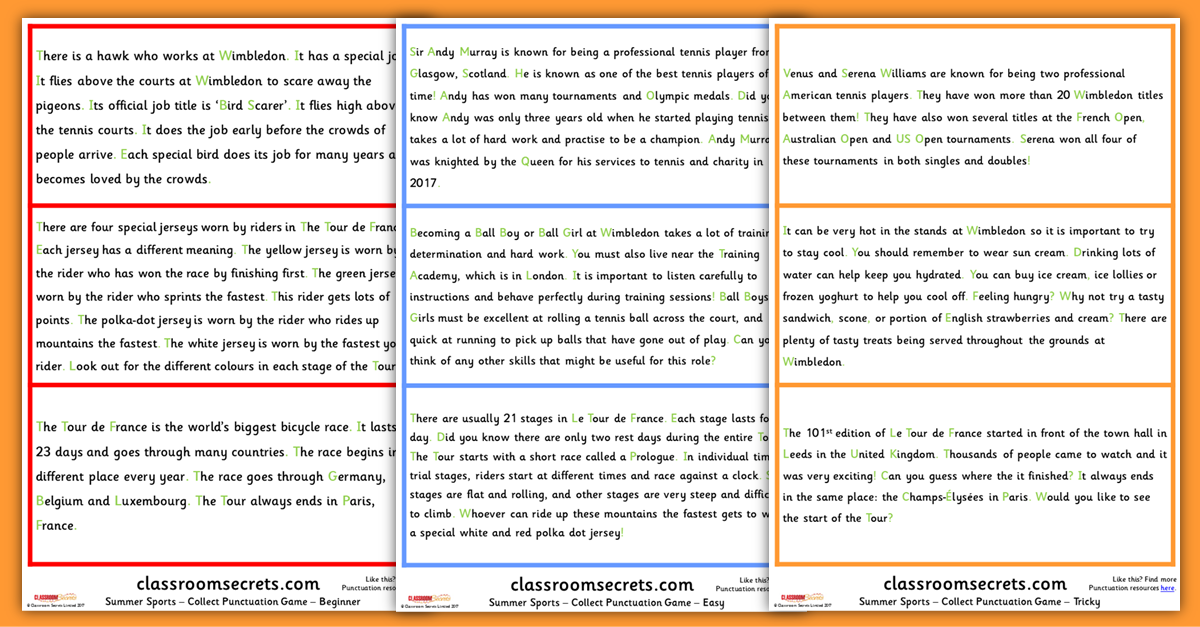Summer Sports Collect Punctuation Game KS1

Punctuation Game KS1 Resources
Punctuation Game KS1 cards all about summer sports. Here you will find the Collect Punctuation base game (Rules and Resources) for this game. We have many different game cards in various topics so that you can play the game again and again with different content.
Not a member? Sign up here.
What's included in the pack?
This pack includes:
- Summer Sports Collect Punctuation Game Cards in three differentiated level Ones to Watch teacher version with questions and answers on the text, pupil version without questions to the text, differentiated challenge activities and challenge activity answers
National Curriculum Objectives:
English Year 1: Develop their understanding of the concepts set out in English appendix 2 by beginning to punctuate sentences using a capital letter and a full stop, question mark or exclamation mark. More resources with this objective.
English Year 2: Use commas to separate items in a list. More resources with this objective.
Differentiation:
Beginner Players collect full stops and capital letters and place them in a text. Aimed at Year 1 Developing.
Easy Players collect full stops, capital letters, exclamation marks and question marks and place them in a text. Aimed Year 1 Secure/Year 2 Emerging.
Tricky Players collect full stops, capital letters, exclamation marks, question marks and commas in lists and place them in a text. Aimed at Year 1 Mastery/Year 2 Secure.
This resource is available to download with a Premium subscription.





